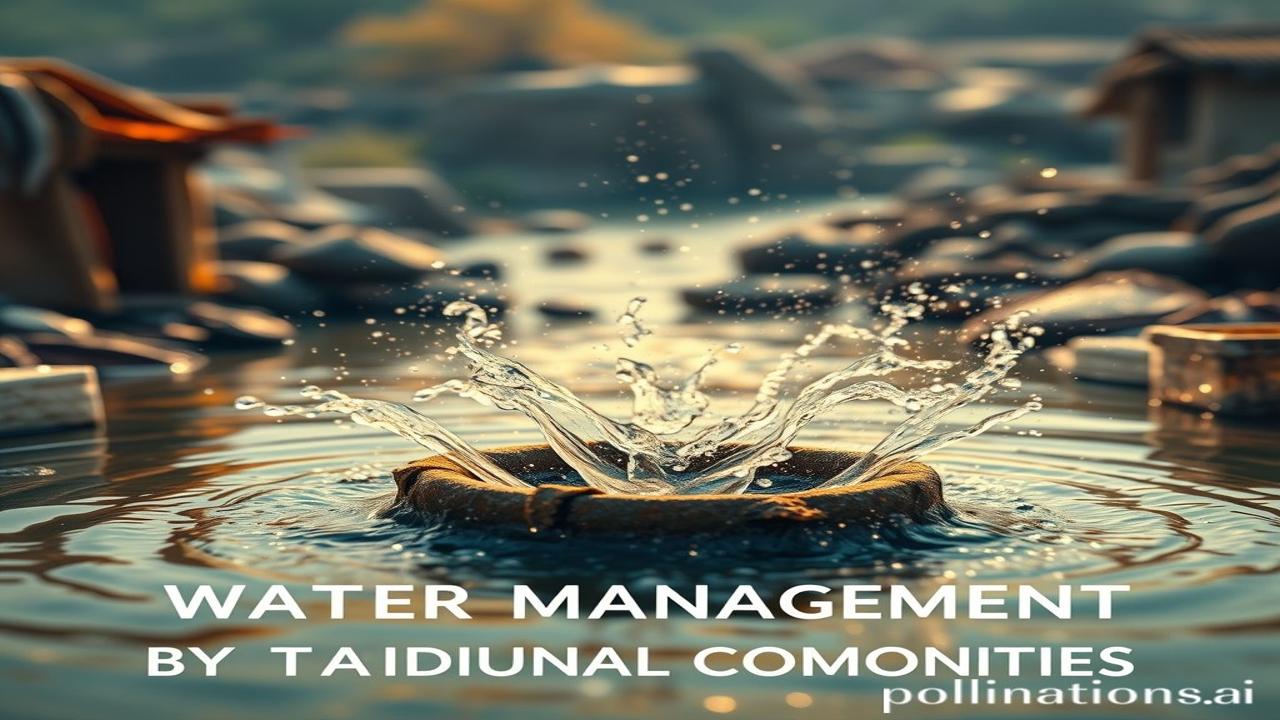Pani Ki Kahani: Remembering India’s Traditional Water Management Wisdom
Kabhi socha hai, jab barish ki boondein dharti ko chhuhti hain, toh woh humein kya kehna chahti hain? Shayad woh humein un logon ki kahaniyan sunana chahti hain, jinhone pani ko puja aur bachaya, usse zindagi ka hissa banaya. Aaj, jab hum water crisis ke baare mein baat karte hain, toh aao zara peeche mudkar dekhein, apne purvajon ke wisdom se kuch seekhein.
Historical & Cultural Context: Water is Life, Water is Sacred
Water management by traditional communities wasn’t just about irrigation or drinking water. It was a holistic approach, woven into the very fabric of life. From the Indus Valley Civilization (around 3300-1700 BCE) with its advanced drainage systems to the elaborate tank systems of the Chola dynasty (9th-13th century CE) in South India, pani ka importance hamesha se hi paramount raha hai.
Yeh techniques, often passed down through generations, involved building baolis (stepwells), ponds, tanks (talabs), and intricate canal networks. They weren’t just engineering marvels; they were also deeply connected to the local ecology and social structures. Think of the ‘kuhls’ of Himachal Pradesh – gravity-fed irrigation channels that are community-managed, ensuring equitable water distribution.
Ismein, water sirf resource nahi tha, it was a deity – often associated with goddesses like Ganga and Yamuna. The reverence for water is evident in countless temples built near water bodies and in the rituals performed around them.
Zameeni Sach – Log Aur Jeevan: A Day in the Life of a Water Weaver
Imagine a small village in Rajasthan, say, 800 years ago. Ma Kesarbai wakes up before dawn. Her first task is to fetch water from the local baoli. The walk is long, but the cool, intricate architecture of the baoli makes the journey a little less arduous.
“Jai Shree Krishna,” she murmurs, descending the steps, offering a silent prayer to the Jal Devi (water goddess). The water is cool and clear, filtered naturally through the layers of stone.
Back home, her husband, Kishanlal, a farmer, prepares for the day. He relies on the local ‘talab’ (pond), built by the community centuries ago, for irrigating his fields. The talab isn’t just a water source; it’s a lifeline, a symbol of collective responsibility.
Elderly Dadaji tells the younger generation stories of how the talab was built, the rituals performed during its construction, and the importance of maintaining it. “Beta, pani ki kadar karna. Yeh toh zindagi hai.”
Evenings are spent in community meetings, discussing water management strategies, ensuring fair distribution, and planning for the future. These meetings weren’t just about logistics; they were about strengthening social bonds and reinforcing the community’s shared values.
Dharohar Aur Pehchan: Echoes of the Past in Today’s India
Today, in the face of climate change and increasing water scarcity, the wisdom of our ancestors is more relevant than ever. While modern technology offers solutions, it’s crucial to remember the sustainable practices that were ingrained in our traditional systems.
You can still see remnants of these systems in various parts of India. In Rajasthan, stepwells like Chand Baori continue to inspire awe and wonder. In South India, ancient temple tanks still play a vital role in water conservation.
Bharatiyata, or Indianness, lies in this deep understanding of our relationship with nature, the realization that we are not separate from it, but an integral part of it. Water conservation isn’t just an environmental issue; it’s a cultural one, a reflection of our values.
Mazedar Tathya ya Bhram-Bhanjak: The Truth About “Waste” Water
Log samajhte hain ki traditional societies primitive the, aur modern technology hi solution hai. Lekin asli sach yeh hai ki unhone jo water management system banaye, woh sustainable the aur ecosystem ke saath harmony mein kaam karte the. Modern systems often overlook the interconnectedness of water resources and prioritize short-term gains over long-term sustainability. For instance, the concept of ‘waste’ water is relatively new. Traditionally, all water was seen as valuable and was reused or recycled in various ways.
Drishya Aur Bhavnayein: Smells, Sounds, and Sensations
Imagine the air around a baoli – cool, damp, and filled with the scent of damp earth and moss. The sound of water trickling down the steps, the rustling of leaves in the nearby trees, the distant chants from the village temple. Feel the cool, smooth stone beneath your feet, the weight of the water pot on your head.
Imagine the feeling of walking past a village pond, its surface reflecting the sky like a mirror, the air buzzing with the sound of insects and the chatter of birds. The sight of farmers tending to their fields, relying on the water from the pond to nourish their crops.
Antim Vichar ya Uddharan: A Reflection on Water Wisdom
“Jal hi jeevan hai.” This simple truth, deeply ingrained in our culture, reminds us of the profound importance of water. The wisdom of our ancestors lies not just in their engineering skills, but in their deep understanding of the interconnectedness of all living things. Let us learn from the past and strive to create a future where water is valued, conserved, and shared equitably for generations to come.
“Apah prathamam samabhavan tat devastava vartatam. / Apo hi stha mayo bhuvasta na urje dadhatana.” (Meaning: Water was created first, and it is the source of life. May it bring happiness, strength, and vitality.)
